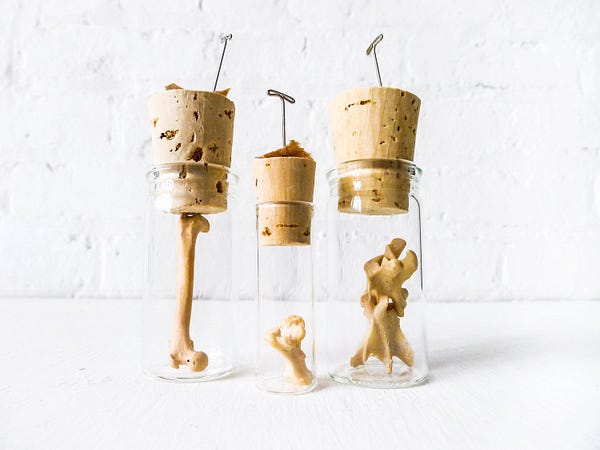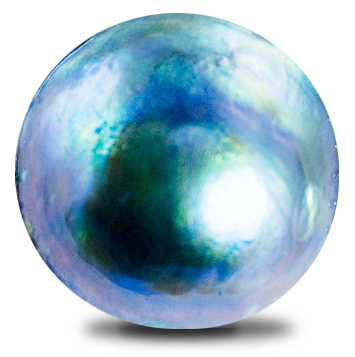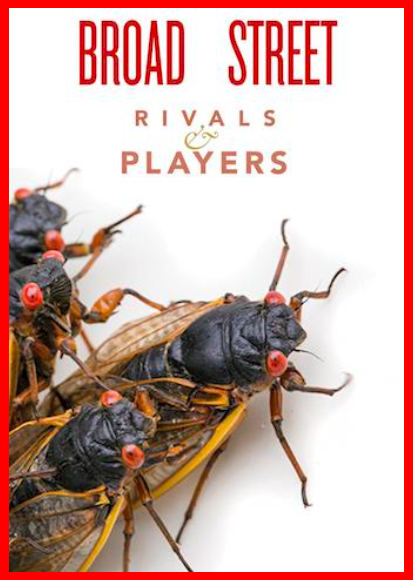Anatomy of a Chicago Zen sesshin.
“Better to just let the mind settle as best it could into a receptive emptiness …”
Blue Pearl
Peter Stine
In the evening I stood in front of a large, tidy, wood-framed house on the western edge of downtown Chicago. This was the Zen temple where three days of meditation, called a sesshin, were about to start.
I’d arrived that afternoon from Detroit on an Amtrak, limbering up by sitting on my calves in the seat of the rumbling coach, staring out the window at rolling Michigan farmland spotted with snowdrifts like white burial mounds. Now, in pursuit of the Blue Pearl, I climbed the stairs to the roshi’s apartment on the second floor.
He stood inside the door, a short, compactly built man with a full head of black hair that was shaved to the skull. A mailman by day, as I knew from a previous visit, he had eyes as wide as pizzas. Another arrival, a young woman, slipped by me and gave him a tiny trumpet from Tibet and some saint’s bones in a vial. He accepted these absurd offerings graciously, which impressed me.

Soon I stood in the next room, beside a monk watching local TV news. A collision and derailment had occurred on the “L” an hour ago. Several passengers were reported dead, and images of paramedics hauling bloodstained bodies from twisted coaches flashed on the screen.
I’d been on those tracks at about that time and place. Word circulated that the roshi’s wife had been on that same “L” line and was still not accounted for. He would carry this awareness inside him all evening, without a trace of anxiety or concern. He was a rock.
Zen teaches you life hangs by a thread.
And then there is the Blue Pearl — a tiny light of cobalt blue that can appear during meditation. According to Zen masters, it’s the subtlest covering of the individual soul, capable of expanding and totally enveloping someone. Always the color of the sky and the largest of living creatures, the blue whale. The jewel of enlightenment.
* * *
All of us left the apartment and went downstairs into the meditation hall or zendo. Soon maybe forty people milled around there, a mix of students, professionals, “respectable” people, longhairs, bohemians, young and old. Chants followed, a chime rang, and the sesshin started.
We took cushions and assumed full or half-lotus positions, facing one of the four walls. Then a gong vibrated and everyone meditated for forty minutes. It’s a long time to be staring at a blank wall, fighting off mental panic and physical pain.
We rose for kinhin, a slow, dignified walk in single file around the zendo, then back onto the cushions for another forty minutes of meditation. I struggled mightily, fighting off drowsiness, stabbing pain in my legs. Someone’s foot next to mine started shaking frenetically.
It wasn’t yet time to pursue the Blue Pearl. Better to just let the mind settle as best it could into a receptive emptiness.
* * *
I was still recovering from my spiritual mentor back in Detroit. He was an African-American barber named Otis, a black belt in karate who’d had me out punching the trunks of trees. He said there’s a karate master on Okinawa who could punch out charging bulls. What he did first was smash his knuckles with a sledgehammer; then he rearranged them into a flat, more potent hitting surface. But ever punch a tree? It’s hard! For several months my knuckles were purple, scabbed, gruesomely swollen. Overall my hands looked like psychedelic mittens. Why continue this? No more Otis.
Before that was Baba. An Indian guru I’d met under a white tent filled with devotes high in the Catskills, seated on a raised wooden platform, handsome and brown-skinned, wearing a knit cap and red toga. His toes were wiggling and seemed to glow. When the service was over, people came forward to give Baba a gift, and luckily a hippie, one who looked like he could get lost in the color blue forever, slipped me a grapefruit. I walked down the rows and knelt before Baba and gave him the grapefruit. He stood up, towering above me, andhit me across the head with a bouquet of peacock feathers.
At that instant I experienced shaktipat. A white H-bomb went off in my head. My organs and muscles began to shake at the base of my spine, and my mind, hitherto skeptical and overly critical, was now reeling in an ecstasy that reduced an orgasm to lacing your shoes. But who could embrace a spiritual mentor linked to Oakland’s criminal underworld and the sexual abuse of teenaged devotees? No more Baba.
My hands looked normal now, resting on my thighs, thumbs touching, forming a circle with my index fingers. I became gradually aware of the defrocked monk sitting three cushions down, no longer wearing his yellow robe, who had been so kind to me last summer. Alan kept raising his arms over his head to signal for the kyosaku, a stick used to strike your shoulders during meditation to sharpen concentration. Indeed, another monk whacked the hell out of him all evening long. Was there some kind of punishment or penance going on? But punishment violates the spirit of Zen.
As for my own meditation, I got nowhere. Makyo, or illusion, filled my head. The day’s residue floated up like trash along a curb. No distant watery horizons came into view. No trace of the Blue Pearl
Rather I was mired in hateful thoughts of Elizabeth, now fighting me in Detroit courts for custody of our sons. I imagined her miraculously erased from my life in a car accident. I daydreamed of sudden omniscience, of knowing everything there was to know about life, leaving me unable to speak. So I found myself locked up in an Alzheimer’s ward where people had come to know nothing at all. Not a very Zen-like state, and I pulled out of it by imagining the roshi’s wife trapped in a twisted coach.
As we repeated cycles of meditation, rising for kinhin became harder, my legs asleep or stilts of pain. Once I came close to stumbling into the roshi. Others filing around the circle were farting loudly, some doubling up with muffled laughter.
There was no harmony to any of this. I wanted to be somewhere else. By the fourth sitting I was in such pain that vision failed me, the wall became sheer fuzziness, no surface cracks, no chipped paint to cling to, get lost in, no way to pass spiritually beyond the wall.
The meditation was over by eleven o’clock, and I slipped out of the temple and walked up the street in freezing darkness to a diner. The defrocked monk was there. I joined him at the counter and ordered hot chocolate.
We exchanged pleasantries, and then I asked, “Alan, is there any word about the roshi’s wife?”
“She’s safe,” he replied. “Apparently stayed downtown with a friend.”
We were quiet a moment, the cup warm in my hand.
“You’re calling for the kyosaku a lot,” I said. “Any reason for that?”
“Sitting is power,” he said, without conviction. “That’s all there is to it. Potentially we have propellers growing out of our heads . . .”
“We do?”
“Yes. Strong thrusts of spirit. The stick can get them turning. It can also punish. You know, I edit the temple’s newsletter, and last week I carelessly misspelled schizophrenia as “S-K-I-T-S-ophrenia” in an article. The roshi is still angry.”
I looked at him.
“But Alan, anger is not Zen, but exactly what it tries to overcome. I hope you can help the roshi with his problem . . . But tomorrow I’m going for the Blue Pearl.” Speaking this way, as if I were in competition for a trophy, should have warned me, but it didn’t.
Soon we walked back to the temple and found everyone laid out wall to wall in sleeping bags on the floor of the zendo. I had a dream that night of searching in the dark for the bathroom only to step on the roshi’s head.
* * *
Everyone was awakened by 4:45 a.m. We sipped some tea, and then went back to meditation. My efforts were cleaner, but still shallow, without resolve. There were fleeting daydreams, memories of my father taking me to the Polo Grounds, of playing rugby against a team of Welsh coalminers in Cardiff, then floating afterwards in the mud-darkened common bath of an ancient locker room.
This was not helpful. Memory had to be played over and over on the wall, overexposed as it were, and converted to blank film. To ever reach the Blue Pearl, I needed some help from the kyosaku. I raised my arms, and a monk laid four whacks on my shoulders that knocked the spots I was staring at off the wall.
Then the Blue Pearl appeared.
As if from another realm, a blue gem on the wall, in three dimensions, the sparkling light casting a glow of infinite generosity and compassion.
I wanted to invade that field, but knew almost instantly that I could not. Aspiration faltered. I liked my own self well enough to be reluctant to cash it in. Besides, I could never match the Buddhist monks I respected, like those in the streets of Saigon, setting themselves on fire to protest the war. Wrapped in flames, they never broke their posture before collapsing into ashes. And maybe I preferred the personal fuckup to being rescued by Zen.
Though Zen’s generosity gave space for the individual to bloom, reality was bigger than anyone’s own imaginings. My allegiance remained with those not enlightened.
Soon enough the Blue Pearl started to fade from the orange sunlit wall like a lantern losing kerosene. I tried to bring it back, only to find myself staring at a giant bottle of milk suspended right before my nose. And hallucinations don’t count.
By the close of the fourth sitting, my legs were in such agony I just broke posture and thrust them straight out toward the wall. It brought instant, delirious relief.
Fuck this. Zen had to grant one the wisdom of accepting a bad day. Something did come from nothing. I thought of Pascal, saying that all our woes stem from an inability to sit quietly alone in a room.
But I needed some Western woes by now, just to balance the view. So I walked out of the temple at noon into dazzling winter sunlight. All that meditation, however impure, had left my mind very lucid. I had an almost hallucinatory take on physical objects: traffic light, parked car, sandwich sign, dog pooping. I was touched to learn later that the roshi had asked about my absence.
* * *
I spent the afternoon at the Lincoln Park zoo, and while walking through the new gorilla exhibit, was set upon by a huge silverback that suddenly charged the glass wall, banging his head trying to get at me. It shook me up. Gorillas should know I loved them.
That night I went off to a disco club on Rush Street, alive with mirrors, glass ball, loud music, and bare flesh. After an hour in the haze of strobe lights, turning those of us on the dance floor into flickering shadows, like actors in an old silent movie, I decided I loved Chicago.
I drank at the bar with a pretty brunette who walked dogs for a living, holding a dozen leashes in her hands marching down Michigan Avenue. I told her about the vet living on my block in Detroit who moved back to Montana because he was sick of carving bullets out of dogs.
There was also a nerdy hedge fund manager with an orange bowtie, bragging about his Wall Street thefts. Then a green-eyed woman with stringy red hair was hanging around me, whispering she wanted to get fucked tonight, somewhere, by somebody.
At one point I tried to pass into the “Members Only” section of the club, but was blocked by a gorgeous young woman in full usher’s uniform. “Are you from the public bar?” she asked.
“Yes, dear girl, but didn’t you start there yourself?”
The green-eyed woman came up behind me. “Don’t worry about this one,” she said sarcastically. “He thinks he’s enlightened.”
The next morning I rode Amtrak back to Detroit.
* * *
The sesshin wasn’t quite the end of Zen for me. I meditated now and then just to stay composed, keep my mind laundered. Concentrating on the act of breathing in silent stillness always seemed to deliver some latent strength.
But there was no need in hoping for its ultimate success. Losing my sons in the custody fight would pull me back into dakkha, the world of suffering, for the long haul. The Blue Pearl was gone for good, but then that jewel must have been rejected by Buddhists I most admired, the bodhisattvas, the compassionate ones who turned away from the ethereal realm to deal with people like me.
*****************************************************************
Peter Stineis the author of The Art of Survival, a collection of literary essays, and the editor of four other books. He founded the literary journal Witness in 1987 and was editor-in-chief through 2007. His writings have appeared in many publications, including The Iowa Review, Boulevard, The Gettysburg Review, The Threepenny Review, Contemporary Literature, The New York Times, Sport Literate, and Harold Bloom’s Modern Critical Views.











